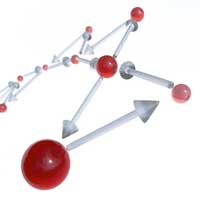 Physicists have shown that topological phases could exist in biology, and in so doing they have identified a link between solid-state physics and biophysics.
Physicists have shown that topological phases could exist in biology, and in so doing they have identified a link between solid-state physics and biophysics.
Monday, December 21, 2020
Topological phases in biological systems
 Physicists have shown that topological phases could exist in biology, and in so doing they have identified a link between solid-state physics and biophysics.
Physicists have shown that topological phases could exist in biology, and in so doing they have identified a link between solid-state physics and biophysics.
Striking gold: Catalysis research at the nanoscale
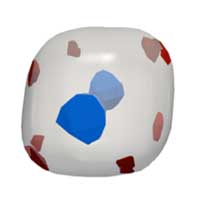 By examining tiny particles of gold with powerful X-ray beams, scientists hope they can learn how to cut down on harmful carbon monoxide emissions from motor vehicles.
By examining tiny particles of gold with powerful X-ray beams, scientists hope they can learn how to cut down on harmful carbon monoxide emissions from motor vehicles.
Researchers invent method to 'sketch' quantum devices with focused electrons
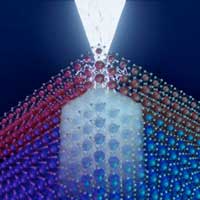 Technique is 10,000 faster than previous methods, and can create active nanostructured gates directly below two-dimensional materials such as graphene.
Technique is 10,000 faster than previous methods, and can create active nanostructured gates directly below two-dimensional materials such as graphene.
New nanomaterial a key step toward hydrogen as a stable and clean fuel source
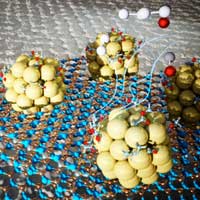 Researchers have designed and synthesized an effective material for speeding up one of the limiting steps in extracting hydrogen from alcohols. The material, a catalyst, is made from tiny clusters of nickel metal anchored on a 2D substrate.
Researchers have designed and synthesized an effective material for speeding up one of the limiting steps in extracting hydrogen from alcohols. The material, a catalyst, is made from tiny clusters of nickel metal anchored on a 2D substrate.
Mapping out a transient atom
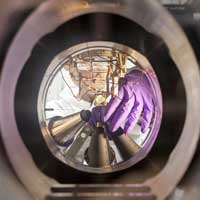 Scientists have published the results of an experiment that could provide a blueprint for the analysis of transitions states in atoms and molecules. This would open up new opportunities to gain insights into important processes such as photocatalysis, elementary steps in photosynthesis and radiation damage.
Scientists have published the results of an experiment that could provide a blueprint for the analysis of transitions states in atoms and molecules. This would open up new opportunities to gain insights into important processes such as photocatalysis, elementary steps in photosynthesis and radiation damage.
Skyrmions - the basis for a completely new computer architecture?
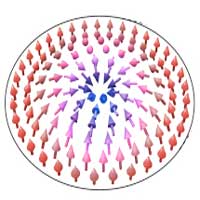 A team of researchers has succeeded for the first time in producing a tunable multilayer system in which two different types of skyrmions - the future bits for '0' and '1' - can exist at room temperature.
A team of researchers has succeeded for the first time in producing a tunable multilayer system in which two different types of skyrmions - the future bits for '0' and '1' - can exist at room temperature.
Goldilocks and the three quantum dots: This one's just right for peak solar panel performance
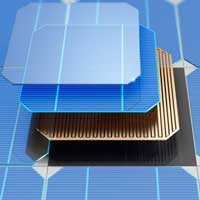 Maximising the efficiency of renewable energy technology is dependent on creating nanoparticles with ideal dimensions and density, new simulations have shown. Scientists have developed a process for calculating the perfect size and density of quantum dots needed to achieve record efficiency in solar panels.
Maximising the efficiency of renewable energy technology is dependent on creating nanoparticles with ideal dimensions and density, new simulations have shown. Scientists have developed a process for calculating the perfect size and density of quantum dots needed to achieve record efficiency in solar panels.
Subscribe to:
Comments (Atom)
